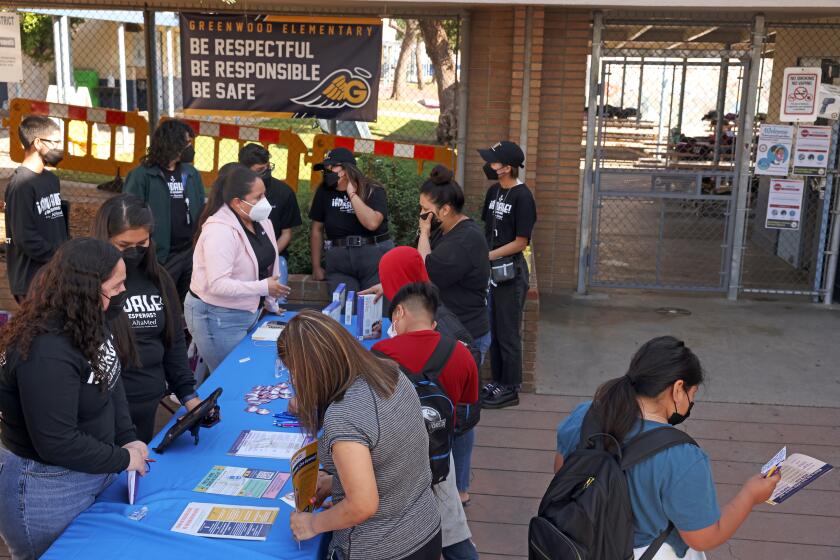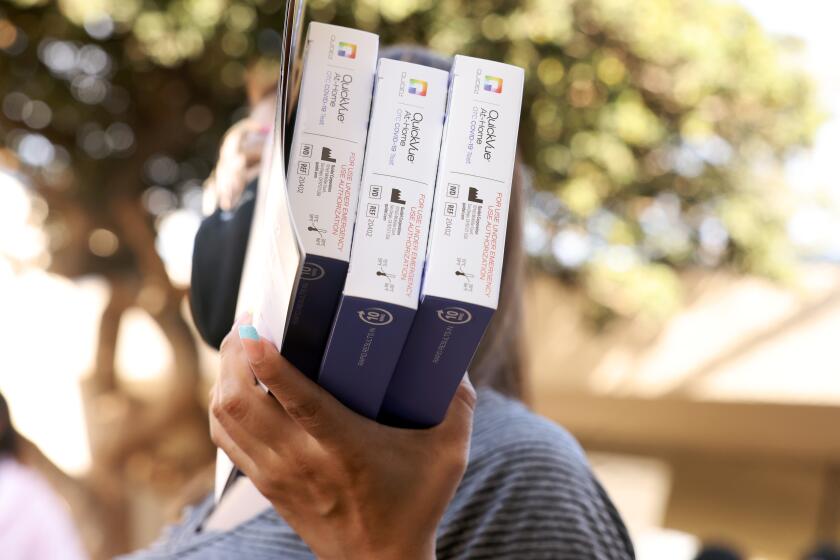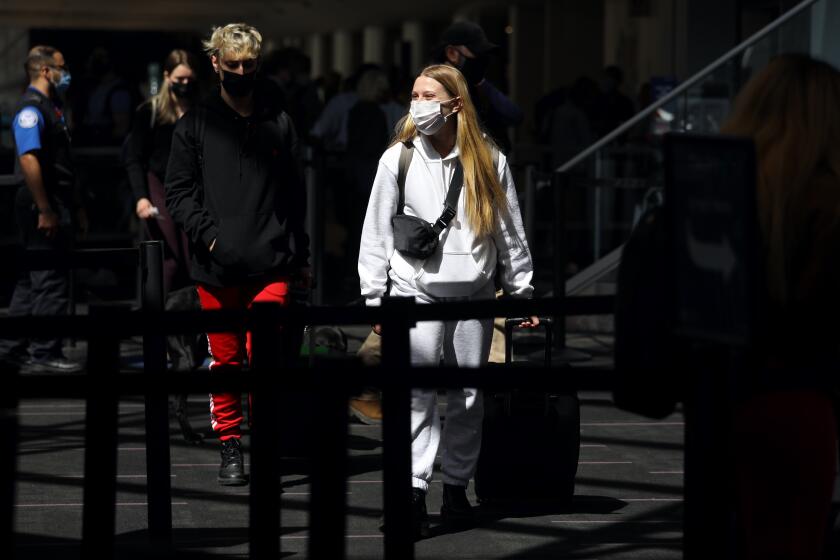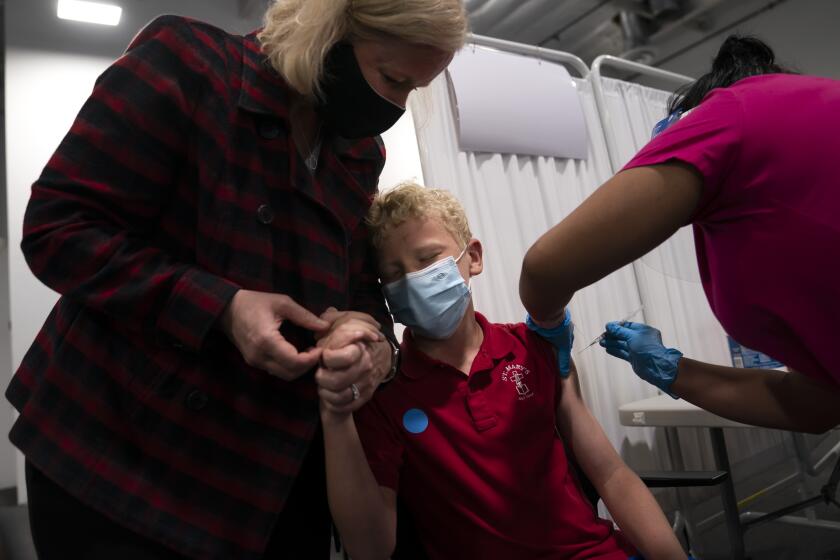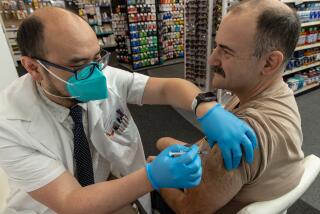How to get more people vaccinated? âYou stop talking and you listen,â Walensky says
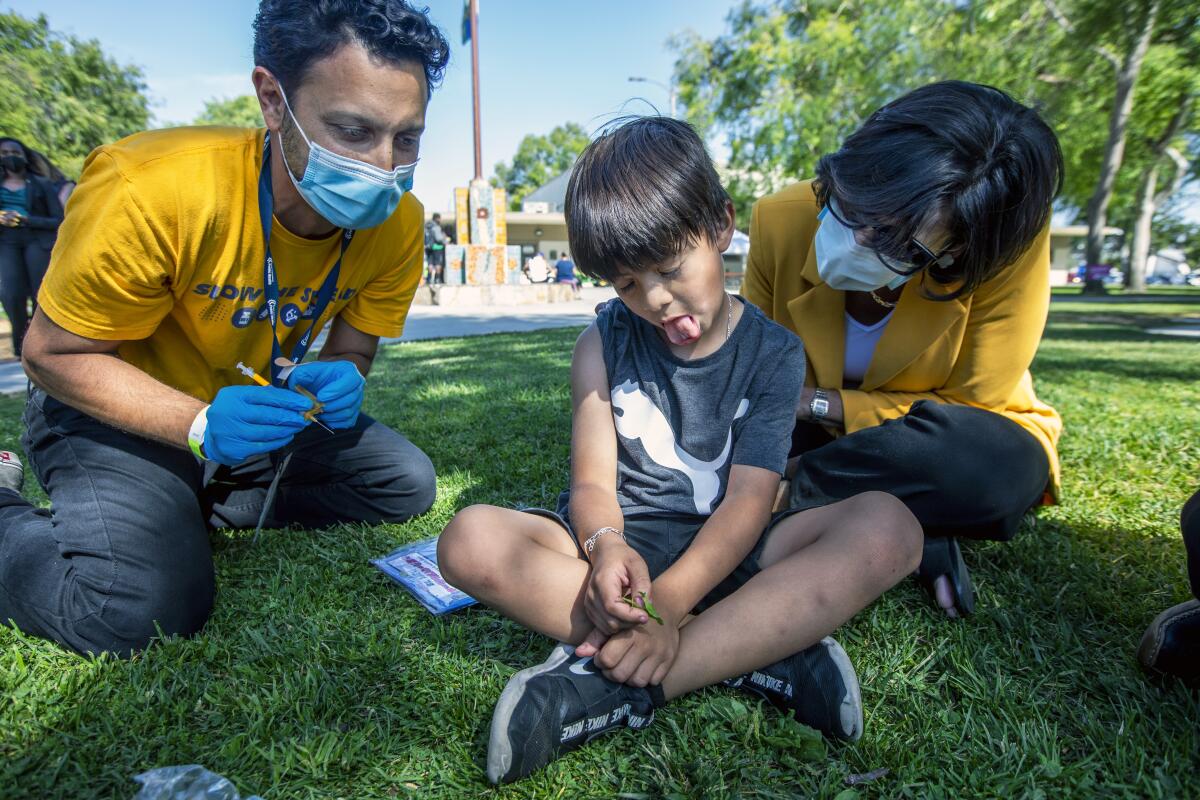
Just after receiving a dose of a COVID-19 vaccine, 7-year-old Allan Fernandez turned around for a hearty high-five.
The recipient was a surprise guest at the impromptu inoculation: Dr. Rochelle Walensky, one of the nationâs leading public health officials.
Walensky stopped by the vaccination site at Ted Watkins Memorial Park on Thursday afternoon as part of her first official visit to Los Angeles since becoming director of the U.S. Centers for Disease Control and Prevention early last year.
The occasion was festive â and not just because the site was decked out for Cinco de Mayo.
âItâs really inspiring and motivating and joyous, right?â Walensky said later during an interview with The Times. âItâs Cinco de Mayo, there are balloons and guitars, there are children playing in sunshine in the park, and then thereâs information that is literally brought to them where they are, where parents can ask their questions and then their kids can roll up their sleeves.â
Coronavirus cases are on the rise at Los Angeles County workplaces and schools, underscoring the need to take additional precautions to prevent outbreaks, officials said.
In many ways, the event was a snapshot of the current state of the nationwide COVID-19 vaccination campaign. The earliest phases of the rollout were marked with demand that far outstripped supply â prompting some to go to great lengths in hopes of securing one of the precious doses.
But now that the vaccines have been widely available for more than a year, Walensky acknowledged that everyone who was eager to get a vaccine has likely already gotten one.
Now, she said, the campaign has entered a distinct new phase, in which officials must âtalk to people who didnât run up to be first in line, who needed a little bit more information, who might need a conversation or two or three or four before theyâre really ready.â
âPeople have frequently asked me, âHow do you convince somebody to get vaccinated?ââ she said. âAnd the answer is you stop talking and you listen.â
Coronavirus cases continue to rise in California, prompting one health official to say the state is heading into the next wave of the pandemic.
Overall, L.A. County enjoys a relatively robust level of vaccination coverage. More than 83% of residents ages 5 and older have gotten at least one dose, and 75% have completed their primary vaccination series, county data show.
But further increasing those figures has been slow going for a long time now.
By Feb. 1, just about 7.96 million Angelenos had received at least one shot. But over the following three months, only about 159,000 additional people rolled up their sleeves for the first time.
Health experts also have sounded the alarm regarding stubborn disparities in the vaccine rollout. Countywide, officials project that nearly 89% of Asian American residents have received at least one shot, as have 86% of Native Americans and 79% of white residents.
BA.4 and BA.5 appear to be more transmissible than the original Omicron variant and have a better shot at evading existing immunity, given a new surge in South Africa.
However, the same is true of only about two-thirds of Latino residents and 61% of Black residents.
Throughout the pandemic, Black and Latino residents have also been infected, fallen seriously ill and died from COVID-19 at significantly higher rates than other groups. Health officials have also noted that those living in more impoverished areas have been more likely to bear the brunt of the pandemic.
One of the countyâs strategies for addressing such disparities entails sites like the one at Ted Watkins. The idea is less pop-up clinic and more fixture â a place where community members can drop by to access not only COVID-19 vaccines but a variety of health resources.
As county Public Health Director Barbara Ferrer put it in an interview, âThe best way weâre in service of the residents of L.A. County is to be where they already are and not always ask them to come to special places to get their needs met.â
âThere are some very good reasons why people may not trust us as government or us as healthcare providers, because we havenât always done a good job,â she said. âSo this is a chance to tell a different story and be part of a different story.â
A California measure that would allow children ages 12 and up to be vaccinated without their parentsâ consent, including against the coronavirus, has cleared its first legislative committee.
L.A. County, like the nation as a whole, has seen a steady uptick in coronavirus transmission for the better part of a month. The reported average number of daily new coronavirus cases has jumped 28% in the last week â from 1,764 to 2,264.
The county is now recording 157 new cases a week per 100,000 residents. The CDC classifies anything above 100 to be a high rate of transmission.
Officials have expressed optimism that the recent increases have, to this point, been relatively gradual â rather than the runaway transmission seen during the pandemicâs first Omicron wave, when the number of daily cases reported doubled or tripled from one week to the next.
The extent of infection overall also remains well below the winter Omicron surge but last summerâs Delta wave as well. And hospitalizations and deaths have not yet increased with the same magnitude as cases.
While current conditions warrant caution, Walensky said she thinks the widespread availability of vaccines, tests and therapeutics have helped level the pandemic playing field.
âWe have so many tools right now,â she said. âAnd really, the goal is to be able to get back to our daily lives, get back to the things that we love and to be able to live with this virus.â
The latest maps and charts on the spread of COVID-19 in Los Angeles County, including cases, deaths, closures and restrictions.
However, COVID-19 has thrown many a curveball during its two-plus year rampage across the globe. The latest is a small family of highly infectious Omicron subvariants, which have been blamed for the new infection spikes in L.A. County and elsewhere.
âCertainly we never know whatâs around the corner,â Walensky said. âWe certainly know that more scary, bad variants are possible.â
But given the current landscape and the enduring efficacy of vaccines, sheâs hopeful the height of any future peaks will be lower than theyâve previously been and âthat will keep people out of the hospital and keep people from dying.â
More to Read
Sign up for Essential California
The most important California stories and recommendations in your inbox every morning.
You may occasionally receive promotional content from the Los Angeles Times.
